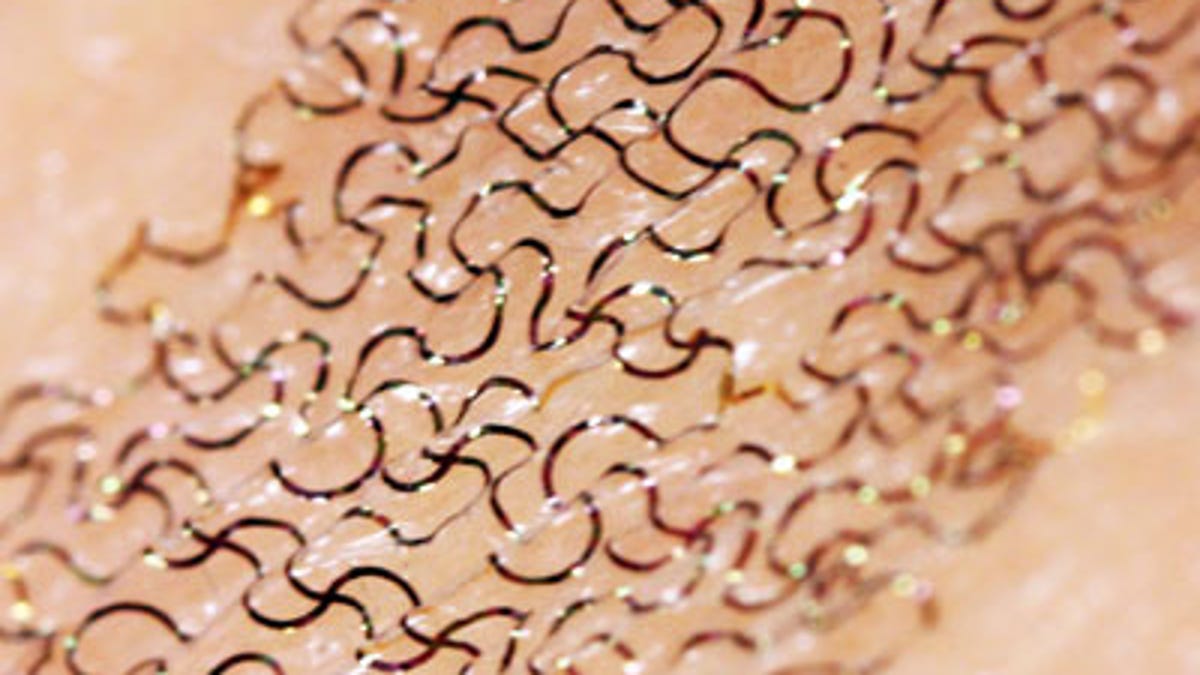Researchers still stuck on electronic tattoo
Elastic electronics can be used for a range of bio-electronic devices to improve medical monitoring attached to the skin or implanted on brain, heart, or muscles to provide treatment.

Researchers are making progress bridging the soft, wet world of the human body and electronics.
The National Science Foundation today released a video giving the latest news from researchers trying to develop flexible electronics that can be placed on the skin or embedded in the body. The hope is that these devices can be used to diagnose or provide care to patients.
The group is testing prototype circuits that can detect muscle, heart, and brain activity with a skin-attached temporary "tattoo." These devices, made from small curly wires embedded in flexible membranes, perform as well as rigid electrodes, according to the NSF.
A group of researchers, including Northwestern University professor Yonggang Huang and University of Illinois Urbana-Champaign professor John Rogers, last year published a paper in Science on "epidermal electronics" which could be attached to patients' skin and still function as the body moves and stretches the skin.
In the video prepared by the National Science Foundation, which partially funds the research, Rogers said he is experimenting with electronics embedded in the body for providing treatment to the heart, brain, or muscle tissue.
One is an "electronic sock" wrapped around a heart that could inject current to prevent an irregular heartbeat. Another application would be a circuit implanted on the brain to prevent seizures.
The group also intends to build elastic electronics with an onboard power source and wireless networking to aid in diagnostics and treatment, Huang said.

